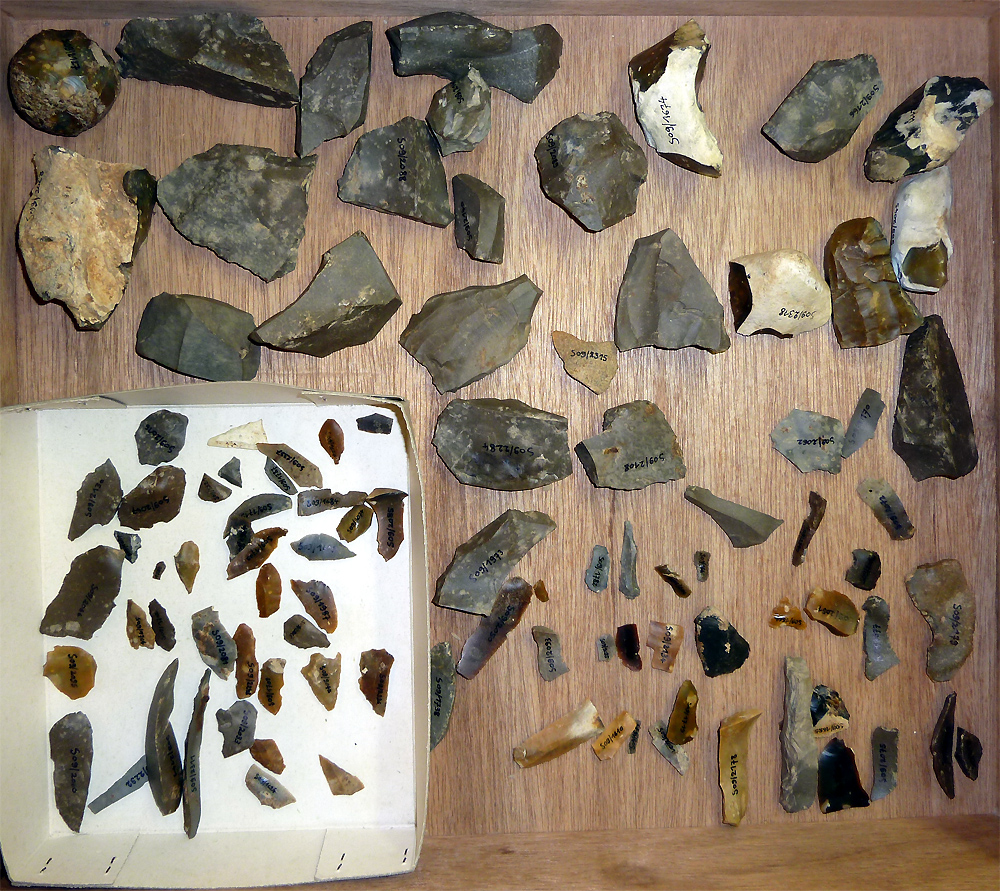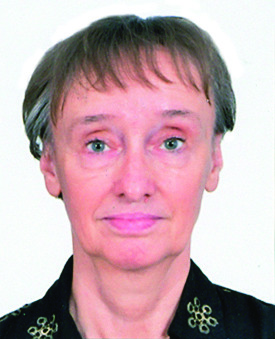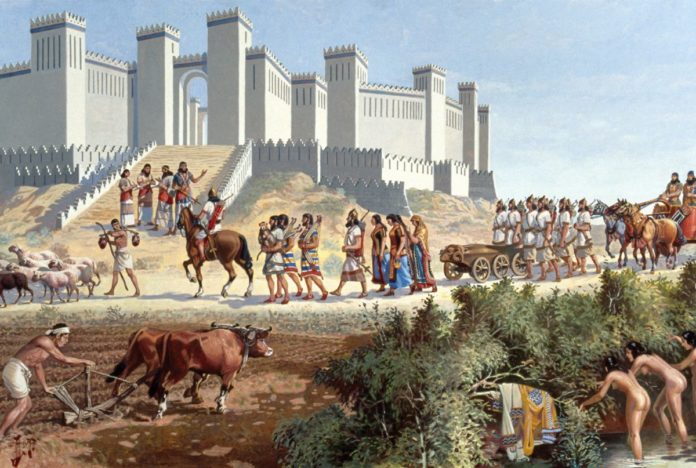A civilization is a complex human society, usually made up of different cities, with certain characteristics of cultural and technological development. In many parts of the world, early civilizations formed when people began coming together in urban settlements. However, defining what civilization is, and what societies fall under that designation, is a hotly contested argument, even among today’s anthropologists. The word “civilization” relates to the Latin word “civitas” or “city.” Most anthropologists agree on some criteria to define a society as a civilization. First, civilizations have some kind of urban settlements and are not nomadic. With support from the other people living in the settlement, labour is divided up into specific jobs (called the division of labour), so not everyone has to focus on growing their own food.
All civilizations have depended on agriculture for subsistence, with the possible exception of some early civilizations in Peru which may have depended upon maritime resources. Grain farms can result in accumulated storage and a surplus of food, particularly when people use intensive agricultural techniques such as artificial fertilization, irrigation and crop rotation. It is possible but more difficult to accumulate horticultural production, and so civilizations based on horticultural gardening have been very rare. Grain surpluses have been especially important because grain can be stored for a long time. A surplus of food permits some people to do things besides producing food for a living: early civilizations included soldiers, artisans, priests and priestesses, and other people with specialized careers. A surplus of food results in a division of labour and a more diverse range of human activity, a defining trait of civilizations.
The term and idea of “civilization” and how to describe it like so many things in social sciences is a western invention. When in the 19th century, anthropology, the science to describe humans and their culture, was created writing, trading, artwork and monuments, and development of science and technology were all defined as aspects of civilizations. Today there is a lot of critique around about this definition; for instance, making the presence of script and writing a precondition for being recognized as a civilization excludes all societies that have not developed a script of their own. But there are known societies that either did not write down their laws and rules so that we can read them today but transmitted them orally. When that society perished much of their oral knowledge was lost or survived in different form in the next civilization. Should we today deny those societies the status of civilization?

Another problem is the so-called inevitability of a “clash of civilizations” as stated by US writer Samuel Huntington. In 1993, he published one of the most cited articles in international relations literature: ‘The Clash of Civilizations?’ (Foreign Affairs, Summer 1993, pp. 22–48), followed three years later by a book-length treatment of the same issue. Talking about what a civilization is it is important to note this idea because it shows the renewed attempt of the West to deny the basic unity of the world and look for clashes in order to justify continued wars even after the collapse of the Soviet Union and communism. If all pretensions had been true, NATO should have been dissolved after this with the enemy communism not presenting a threat any more. But instead, a new enemy was found: Islam. Huntington in his writings contended that a clash between the West and the ‘Muslim world’ would be the key foreign policy issue for the US (and the West more generally) because of the seemingly opposed value systems. The result of this theory can be seen: the birth of al Qaida, 9/11, Afghanistan, Iraq, Syria, Libya, Yemen all-out war against Islamic countries on this and that pretext resulting in turmoil in the Muslim world. The important thing to notice here is that there is no unbridgeable clash of values or anything else between different civilizations. Tauhid teaches us that we all come from the same source and are basically the same.
South Asia is certainly one of the cradles of humanity and of human civilization. South Asia is the name of a sub-region of Asia, consisting of the Indo-Gangetic Plain and the Indian peninsula to the south. It includes Bangladesh, Bhutan, India, Pakistan, Nepal, and Sri Lanka; Afghanistan and the Maldives are often considered part of South Asia as well despite the fact that Maldives and even Sri Lanka are islands separated from the main body of South Asia. Their inclusion implies the cultural relation they share with the subcontinent proper.
The history of core South Asia begins with evidence of human activity of Homo Sapiens, as long as 75,000 years ago, or with earlier hominids including Homo Erectus from about 500,000 years ago. The earliest prehistoric cultures have roots in the Mesolithic (Middle Stone Age) sites as evidenced by the rock paintings of Bhimbetka rock shelters dating to a period of 30,000 BC or older. The Bhimbetka rock shelters are an archaeological site in Madhya Pradesh, central India that spans the Palaeolithic and Mesolithic periods, as well as the historic period. It exhibits the earliest traces of human life in India and evidence of Stone Age consisting of mainly tools made of stone by humans. The cultures are called “prehistoric” because it precedes the use of script and no written evidence is transmitted from that time.

Again, in western understanding, the history of human society is connected to written evidence. Without a written proof with only material evidence like cave drawings, stone tools it is not considered part of history. This is problematic for a country like Pakistan if we consider that the Qur’an was revealed orally and written down only much later. The Prophet of Islam was illiterate. Should we consider him outside the range of history? There is obviously a clash between the understanding of what history is and when it starts between western understanding and Islamic practice, but this clash remains mostly unaddressed. One very unfortunate outcome of this omission is that Pakistan history teaching mainly starts with Muhammad bin Qasim leaving the vast human development in the subcontinent and in the areas where Pakistan is located today unaddressed. This has dire consequences for the formation of our identity: it excludes the pre-Muslim part of our heritage thus creating the impression that there could be a unified Islamic identity regardless of our pre-Islamic traits. One example. When teaching history in IBA Dr. Bettina Robotka took her students to Mohenjodaro. Most of them had never been taken there. The garden in front of the government rest house where they were staying is a replica of an ox cart as shown on one of the seals found in the excavations in Mohenjodaro. Standing there looking at it and discussing it they saw on the road outside the garden an ox cart was passing by exactly the same as depicted on the seal and in the replica. That means tools like this cart have been around for the last 4000 years and have been handed down throughout the ages. While we can see this in case of the cart, there may be other hand-me-downs in Sindh in form of customs, ways to do things like cooking or construction, ideas and myths that are part of today’s culture and at the same time were part of the culture of our ancestors 4000 years ago. If we neglect or remain unaware of our heritage, we will never be able to get straight with our identity.
The purpose of our forthcoming series of articles is to introduce South Asian civilizations to our readers. While these articles will be introductory only, they may well arouse interest and result in more reading and exploring.
Contributed by:

former Professor of South Asian Studies, Humboldt University, Berlin, Editor of the Defence Journal and a Consultant to the Pathfinder Group).





